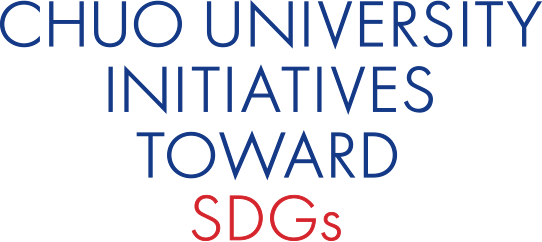2020、2021
中央大学のSDGsへの取り組みINITIATIVES
- HOME
- 中央大学のSDGsへの取り組み
- レーザを利用したプラスチックごみ処理の検討
CHUO UNIVERSITY TOWARD SDGS
2022.03.31
レーザを利用したプラスチックごみ処理の検討
- SDGs目標
-
- カテゴリ
-
- 研究
【取り組みのテーマ】レーザを利用したプラスチックごみ処理の検討(理工学部 庄司 一郎教授)
取り組み実施年度
取り組み概要、意義、成果
現在、日本のプラスチックごみのリサイクルは、単に燃やして熱エネルギーとして回収するサーマルリサイクルが5割以上を占める。本来のリサイクルであるマテリアルリサイクルやケミカルリサイクルの割合を増やすためには、プラスチックごみの材質ごとに効率よく分類する必要がある。もし波長の異なる複数のレーザを用いて材質ごとに別々に裁断等の加工ができれば、分類作業の自動化によってリサイクル率の向上につながる可能性がある。そこで本研究では、プラスチックごみの透過スペクトルを測定することにより、ごみの種類ごとに特徴的な吸収波長を明らかにし、加工するのに適切なレーザの組み合わせについて検討している。
これまで食品の包装やペットボトル、トレー、フィルム、各種容器等のプラスチック500種類以上について赤外波長域での測定を行うとともに、透明なもの50種類については可視光領域でも測定を行った。その結果、材質ごとに特徴的な吸収波長があり、同じ材質でも硬さや色によって透過スペクトルに違いがあることがわかった。また、赤外の炭酸ガスレーザおよび可視の青色レーザをプラスチックごみに照射したところ、特定の材質のみを選択的に加工できる可能性があることがわかった。ただし、複数の材質を混ぜて作られたプラスチックごみも多数存在することから、その分類と加工をさらに検討する必要がある。また、現在、測定したプラスチックごみのデータベース化にも取り組んでいる。
本研究成果は2021年9月12日に第82回応用物理学会秋季学術講演会で発表した。
【Theme of the initiative】Study on laser processing of plastic waste(Faculty of Science and Engineering Professor SHOJI Ichiro)
Year of implementation
2020、2021
Overview of initiatives, significance, and results
More than 50 % of plastic recycling in Japan is currently thermal recycling in which thermal energy is extracted by burning plastics. It is necessary to effectively sort them by types of resins in order to increase the ratios of material recycling and chemical recycling. If we process plastic waste such as cutting by its types using several kinds of lasers with different wavelengths, we can expect increase of recycling ratio by automation of sorting. This work investigates the combination of appropriate lasers to process plastics by measuring the transmittance spectra of plastic waste and clarifying its characteristic absorption wavelengths.
We have measured the infrared spectra of more than 500 kinds of plastic waste including wrapping films, trays, PET bottles, and containers, and also measured the visible spectra of 50 kinds of transparent plastics. We then found that there are characteristic absorption wavelengths for types of resins, and that spectra are different even for the same resins if their hardness or colors are different. We also irradiated infrared CO2 laser and visible blue laser beams to plastic waste, and found that we could selectively cut specific types of resins. However, there are lot of plastic waste comprising from mixture of different types of resins, then we have to further investigate the methods of sorting and processing. We are now also constructing a database of the measured data of the plastic waste.
We had a presentation on this work at the 82nd JSAP autumn meeting 2021.
